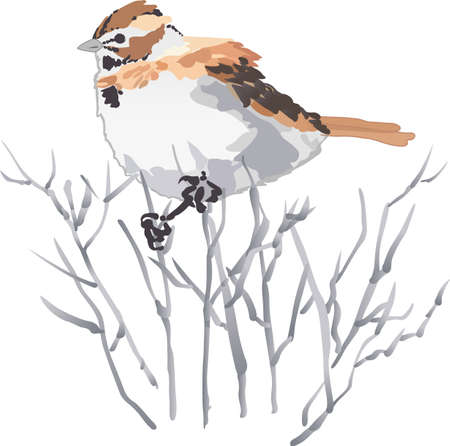Introduction to British Birdwatching
Birdwatching, or “birding” as it’s fondly called, is a cherished tradition across the United Kingdom. From windswept moors to ancient woodlands and coastal cliffs, the UK’s varied landscapes offer a haven for birdlife, making it an ideal destination for enthusiasts. The pastime has long been woven into British culture, with countless individuals and families taking to the countryside equipped with trusty binoculars and well-thumbed field guides. There’s a unique joy in setting out on a ramble—what we Brits call a leisurely country walk—and spotting iconic native birds in their natural habitats. Whether you’re seeking the flash of a kingfisher over a quiet stream or the haunting call of a curlew on an open heath, birdwatching connects people to nature, encourages mindfulness, and fosters a deeper appreciation for local wildlife.
Essential Gear and Top Birdwatching Spots
Heading out into the British countryside for a spot of birdwatching is one of the most rewarding ways to spend a weekend. However, having the right equipment can make all the difference, especially when it comes to binoculars. Choosing a pair that balances portability with clarity is essential. For British conditions—often damp, sometimes misty, and with birds flitting through varied light—a waterproof pair with at least 8x magnification is ideal. Below is a quick comparison of recommended binoculars for UK birders:
| Brand/Model | Magnification | Weight | Waterproof | Price Range (£) |
|---|---|---|---|---|
| Nikon Monarch 5 8×42 | 8x | 590g | Yes | 200–250 |
| RSPB Avocet 8×32 | 8x | 520g | Yes | 150–180 |
| Swarovski CL Companion 8×30 | 8x | 500g | Yes | 900+ |
| Bushnell H2O 8×42 | 8x | 710g | Yes | 90–120 |
Top Local Walks and Reserves for Bird Enthusiasts
The joy of birdwatching in Britain lies not only in the diversity of species but also in the variety of landscapes available to explore. From rugged coastal paths to tranquil wetlands, there’s a walk or reserve for every level of enthusiast. Here are some local favourites:
The Lake District National Park (Cumbria)
An outstanding location for spotting woodland and upland species like the Osprey and Redstart. Try the trails around Derwentwater or Bassenthwaite Lake for some classic British scenery.
Minsmere RSPB Reserve (Suffolk)
This coastal reserve is famous for its rich variety—look out for Avocets, Marsh Harriers, and Bitterns along well-maintained paths and hides.
Slimbridge Wetland Centre (Gloucestershire)
A must-visit for waterfowl lovers, especially during winter migrations. Expect Bewick’s Swans and large flocks of waders.
Dovedale (Peak District)
The scenic river valley is perfect for a day’s hike with binoculars in hand; keep an eye out for Dippers, Grey Wagtails, and even Peregrine Falcons along the cliffs.
A Practical Note:
If you’re new to birdwatching walks, check local accessibility information before setting out. Many reserves offer accessible paths and hides, making birding welcoming for all abilities. With your binoculars ready and these top spots on your list, you’ll be set for memorable encounters with Britain’s best-loved birds.

3. Recognising Britain’s Favourite Garden Birds
Britain’s hedgerows and woodlands are alive with some of our most cherished garden birds, making them rewarding subjects for anyone hiking with binoculars. Among the nation’s favourites are the robin, blackbird, and wren—each offering their own distinct charm and clues for identification.
Robins: The Cheerful Companions
The European robin, with its iconic red breast and inquisitive nature, is a familiar sight even along rural footpaths. Robins are bold and often perch quite close to walkers. Look for their round bodies, upright posture, and listen for their melodious, fluting song—often heard throughout the year, especially during early mornings or mild winter days.
Blackbirds: The Melodic Songsters
Male blackbirds are unmistakable with their glossy black feathers and bright yellow beaks, while females appear brown with speckled plumage. Blackbirds favour low branches or open lawns at woodland edges. Their rich, mellow song can be heard at dawn or dusk—a fluid sequence of notes that carries well through leafy areas.
Wrens: Tiny but Tenacious
The diminutive wren is Britain’s most common breeding bird but can be tricky to spot due to its size and quick movements. Wrens have a rounded body, short tail usually held upright, and a surprisingly loud voice for their stature. Their rapid trilling song bursts from thickets or tangled undergrowth—listen closely near fallen logs or bramble patches during your walk.
When identifying these garden favourites on your hike, take note of their behaviour as well as appearance. Binoculars will help you catch subtle details like the robin’s gentle bobbing or the wren’s flicking tail. Pairing visual cues with distinctive birdsong makes each encounter more memorable and rewarding as you explore Britain’s wild spaces.
4. Spotting Iconic Woodland and Farmland Birds
British woodlands and farmlands are home to a remarkable variety of birds that offer rewarding sightings for hikers with binoculars. Among the most sought-after are the great spotted woodpecker, nuthatch, and skylark—each celebrated for their unique behaviours, calls, and striking appearances.
Great Spotted Woodpecker (Dendrocopos major)
This bird is often heard before it is seen, thanks to its distinctive drumming on tree trunks. Recognisable by its black-and-white plumage with a bold red patch under the tail (and an extra splash of red on the crown in males), the great spotted woodpecker favours mature woodlands and large parks. Look up into the canopy or listen for their rhythmic tapping while scanning tree branches.
Nuthatch (Sitta europaea)
The nuthatch is a small, stocky bird known for its habit of climbing down tree trunks headfirst—a behaviour quite unique among British birds. Its slate-blue upperparts and chestnut flanks help it blend into woodland surroundings, but keen-eyed observers can spot them foraging for insects or seeds in crevices. Their loud, whistling calls are another giveaway when exploring deciduous woods.
Skylark (Alauda arvensis)
Open fields and farmland across the UK are the stage for the skylark’s famous song-flight, where males ascend high into the sky while delivering a continuous, melodious warble. With streaky brown plumage and a subtle crest, skylarks may seem unremarkable on the ground, but their aerial displays are unforgettable. Early spring is an ideal time to witness this spectacle over meadows and arable land.
Quick Reference Table: Where to Spot These Birds
| Species | Habitat | Best Season |
|---|---|---|
| Great Spotted Woodpecker | Mature woodland, parks | All year round |
| Nuthatch | Deciduous woodland | Autumn to spring |
| Skylark | Open farmland, meadows | Spring and summer |
Fieldcraft Tips:
- Move quietly and pause regularly to listen for drumming or song.
- Avoid sudden movements; patience often rewards you with better views.
- Early morning hikes increase your chances of spotting these birds when they’re most active.
Whether you’re scanning ancient oaks or listening over wildflower fields, these iconic species add excitement to any British hike—and make binoculars an essential companion for every rambler.
5. Coastal and Wetland Highlights
If your hiking route leads you along the British coastline or beside tranquil wetlands, you are in for a treat. These environments attract some of the UK’s most distinctive and charismatic bird species—perfect for binocular observation. The unique blend of salt marshes, mudflats, shingle beaches, and estuaries creates an ever-changing stage for avian life.
Avocet: The Elegant Icon
Arguably one of Britain’s most iconic wetland birds, the avocet is instantly recognisable with its striking black-and-white plumage and elegantly upturned bill. Once extinct as a British breeder, conservation efforts have brought this species back to reserves like RSPB Minsmere and Titchwell Marsh. Look for their graceful sweeping motion as they feed in shallow water—a real highlight for any coastal walk.
Oystercatcher: Loud and Proud
The unmistakable oystercatcher is another coastal staple. Sporting a bold black-and-white body and a vivid orange-red bill, these birds are hard to miss both visually and audibly. Their piercing calls often ring out across mudflats and sandy shores as they forage for molluscs. Oystercatchers are widespread, from Scottish lochs to Cornish coves, making them a reliable companion on seaside strolls.
Other Noteworthy Species
Don’t overlook other classic coastal residents such as the curlew—with its haunting call and long downcurved bill—or the redshank, easily identified by its bright orange legs. Wetland habitats also support secretive bitterns and showy little egrets. Binoculars will help you scan reedbeds and estuaries for glimpses of these less conspicuous but equally rewarding species.
Tips for Birding Near Water
When walking near rivers or the sea, patience is key. Birds may be distant or partially hidden by reeds or tide lines, so take your time scanning each habitat zone. Early mornings or dusk can yield more activity, especially during migration seasons when flocks gather in impressive numbers. Always keep an eye (and ear) out—you never know what surprise may emerge from the British coastal wilds.
6. Conservation, Etiquette, and Responsible Birdwatching
While hiking with binoculars in the British countryside is a fantastic way to spot iconic birds, it’s equally vital to ensure our presence doesn’t harm the very wildlife we seek to enjoy.
Respecting Wildlife
Approaching birds quietly and maintaining a respectful distance minimises stress for both nesting and feeding birds. Avoid leaving designated footpaths, especially during breeding seasons, as ground-nesting species like skylarks or lapwings are particularly vulnerable to disturbance. Remember that patience is key—let the birds come into view rather than actively seeking them out.
Understanding Local Conservation Efforts
Many areas popular for birdwatching are managed by organisations such as the RSPB (Royal Society for the Protection of Birds) or local Wildlife Trusts. These groups work tirelessly to preserve critical habitats, restore ecosystems, and monitor bird populations. Supporting their work by following reserve guidelines, volunteering, or becoming a member helps protect Britain’s avian biodiversity for future generations.
The Importance of Preserving Habitats
Preserving wild spaces is essential not just for birds but for all native flora and fauna. Take care not to trample sensitive vegetation or disturb water sources. Carry out all litter—even biodegradable items—and use established hides or viewing platforms where available. By treading lightly and advocating for habitat preservation, we help ensure that future hikers will also have the chance to marvel at Britain’s remarkable birdlife.


